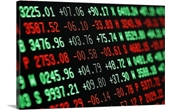Futures

Hot Rolled Futures: Uncertain Times Pushing HR Futures Volatility Higher
Written by Jack Marshall
March 26, 2020
The following article on the hot rolled coil (HRC) steel and financial futures markets was written by Jack Marshall of Crunch Risk LLC. Here is how Jack saw trading over the past week:
Steel
This month HR physical prices as reflected by the index basically started at $560/ST and rose $20-plus to hold, then fell back to $561/ST leaving the monthly average to rest at $572/ST. During the same period, the front 12 months of the HR futures curve gave up on average of roughly $65/ST — Q2’20, Q3’20 and Q4’20 all declined about $67/ST and Q1’21 declined $58/ST. As of last night, the Q2’20 was valued at $503/ST, Q3’20 was valued at $495/ST, Q4’20 was valued at $506/ST, and Q1’21 was valued at $513/ST. The curve reflects the expectation third-quarter results will be the most impacted by the spread of the COVID-19 virus. It should be noted that the futures market dipped even lower. On March 19, the average price of the front 12 months of the HR futures curve had declined from the beginning of March almost $81/ST.
So we have seen a number of hedge buyers come into the market to take advantage of the large discount to the current spot physical prices being reported. That buying has continued here this morning as the HR futures continue to tick higher. In spite of the uncertainty with regard to supply and demand of both HR and scrap, futures markets have been fairly robust with healthy volumes trading across most periods. Almost 490,000 ST of HR futures has traded this month with a few days posting close to record daily volumes.
HR participants will remain laser focused on any supply/demand news for further impacts as everyone watches the gamma in the rate of spread of the virus and tries to apply it to their operations. There have been a number of reported planned curtailments of HR production likely linked with a number of auto companies temporarily ramping down production to adjust for COVID-19 impacts, as well as the drop in tube demand due to lower oil prices. There remains a lot of uncertainty, which is reflected in the higher volatility in price movements in HR futures.
Below is a graph showing the history of the CME Group hot rolled futures forward curve. You will need to view the graph on our website to use its interactive features; you can do so by clicking here. If you need assistance with either logging in or navigating the website, please contact us at info@SteelMarketUpdate.com.

Scrap
The BUS market is also dipping this month. While Mar’20 BUS settled at $297/GT, early chatter has Apr’20 BUS declining on the order of $50/GT. This is likely due to some production adjustments in the near term. During March the front 12 months of the BUS futures curve declined on average roughly $28/GT — Q2’20 declined about $40/GT, Q3’20 and Q4’20 declined about $26/ST, and Q1’21 declined about $20/GT. As of last night the Q2’20 was valued at $254/GT, Q3’20 was valued at $265/GT, Q4’20 was valued at $270/GT, and Q1’21 was valued at $275/GT. With the drop due to the virus impacts, the front 12 months of the futures curve is in a $20 contango. At some point the production cutbacks will impact the supply and likely further push up the middle and back months in BUS. Reduced collections of some types of obsolete could also impact supply, which will likely leave the Shred futures in contango as well.
Below is another graph showing the history of the CME Group busheling scrap futures forward curve. You will need to view the graph on our website to use its interactive features; you can do so by clicking here.


Jack Marshall
Read more from Jack MarshallLatest in Futures

HR Futures: Correction in market after big rally
Another eventful week in the physical and financial steel markets is coming to a close, but with a markedly different tone than the last update at the end of February.

HR Futures: Market drifts lower on light volume
Over the past couple of weeks, Midwest HRC futures have been drifting lower on light volume. This begs the question if the rally has run out of steam, or is it catching its breath after ripping roughly $150 in less than two weeks? The April CME Midwest HRC future made an intraday high at $976 […]

HR Futures: Uncertainty hangs over the steel market
Uncertainty has remained a dominant theme in the US ferrous derivatives markets over the past month. And the Trump administration's tariffs on steel and aluminum are still top of mind for market participants.

HR Futures: Major trade developments lift the ferrous complex
Headline risk has returned to the ferrous complex, with both hot-rolled coil (HRC) and busheling ferrous scrap (BCH) markets surging in response to fresh trade restrictions.

HR Futures: Midwest ferrous futures consolidate gains, market anxiously awaits next move
Four weeks have passed since the last article from Rock Trading Advisors on January 30. The paint has dried, and Midwest HRC futures have exploded higher in response to President Trump’s declaration of impending 25% tariffs on all imported steel products. The rolling 2nd month CME Midwest HRC future erupted through the top end of its downtrend, one that dates back to the peak of the winter 2022 rally. It also broke out of its narrow range seen dating back to June of last year.
